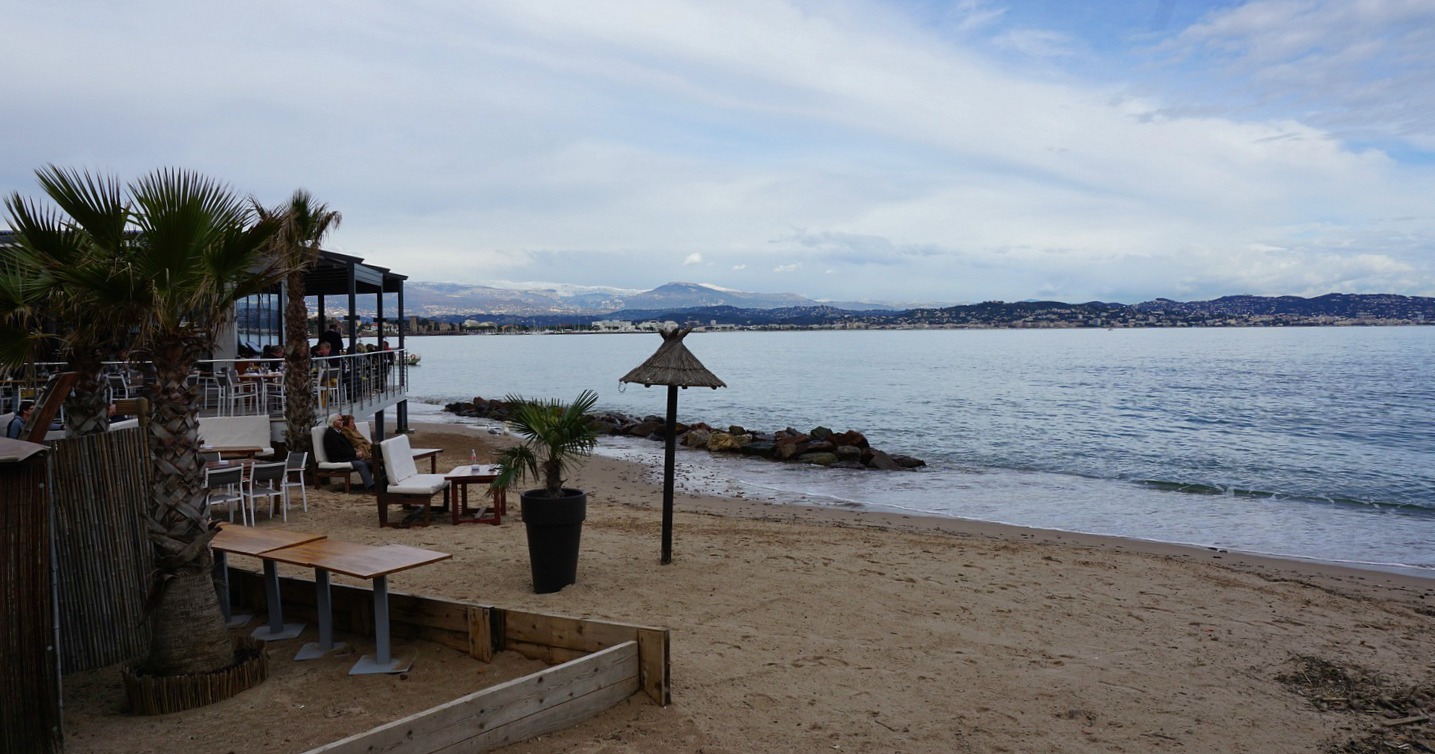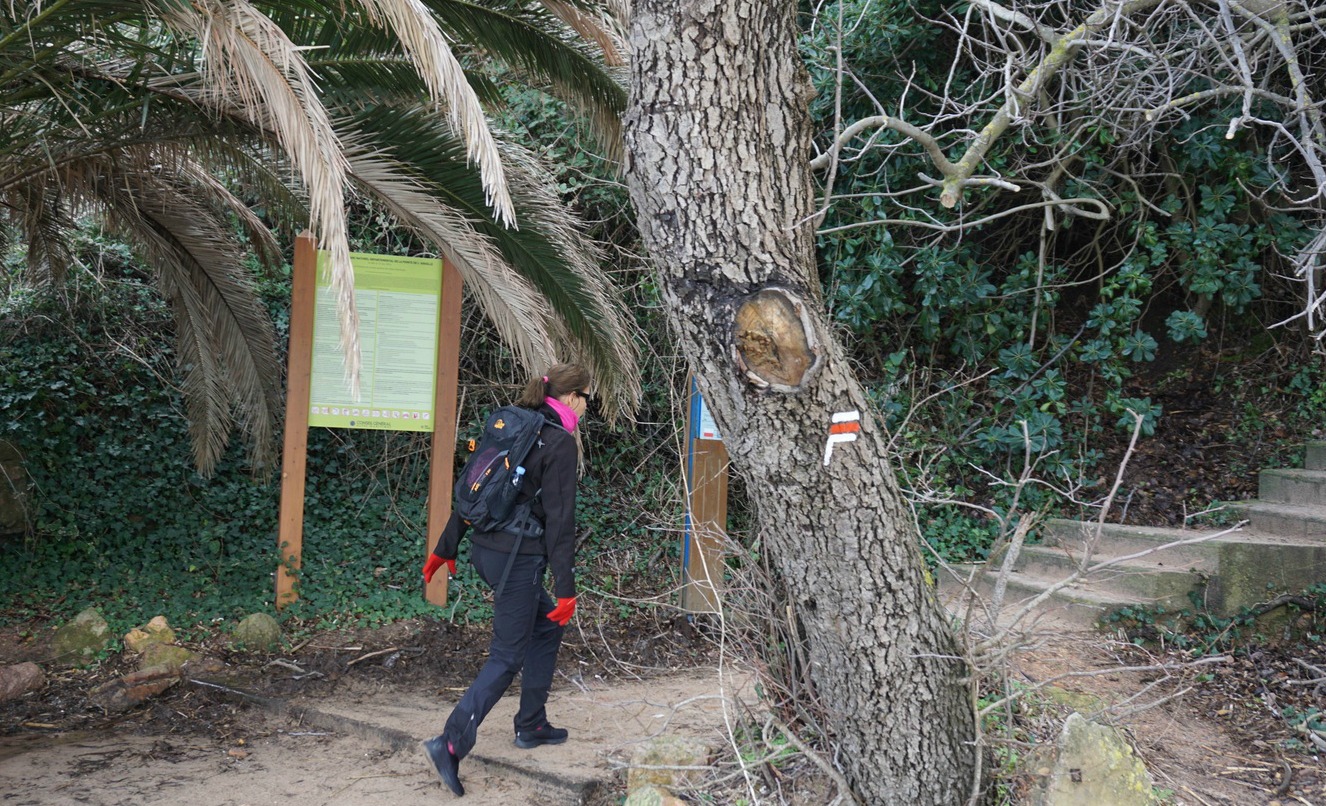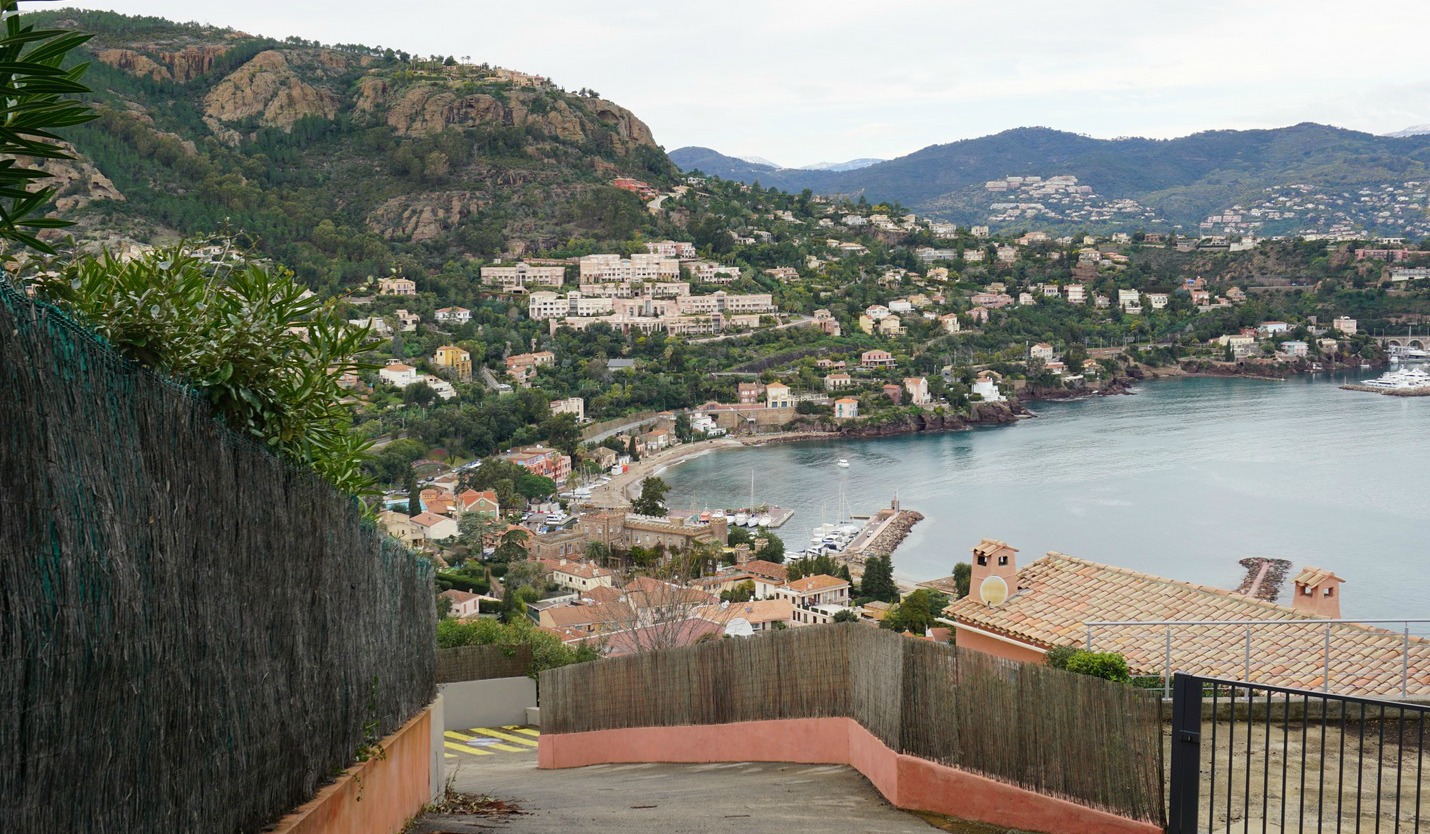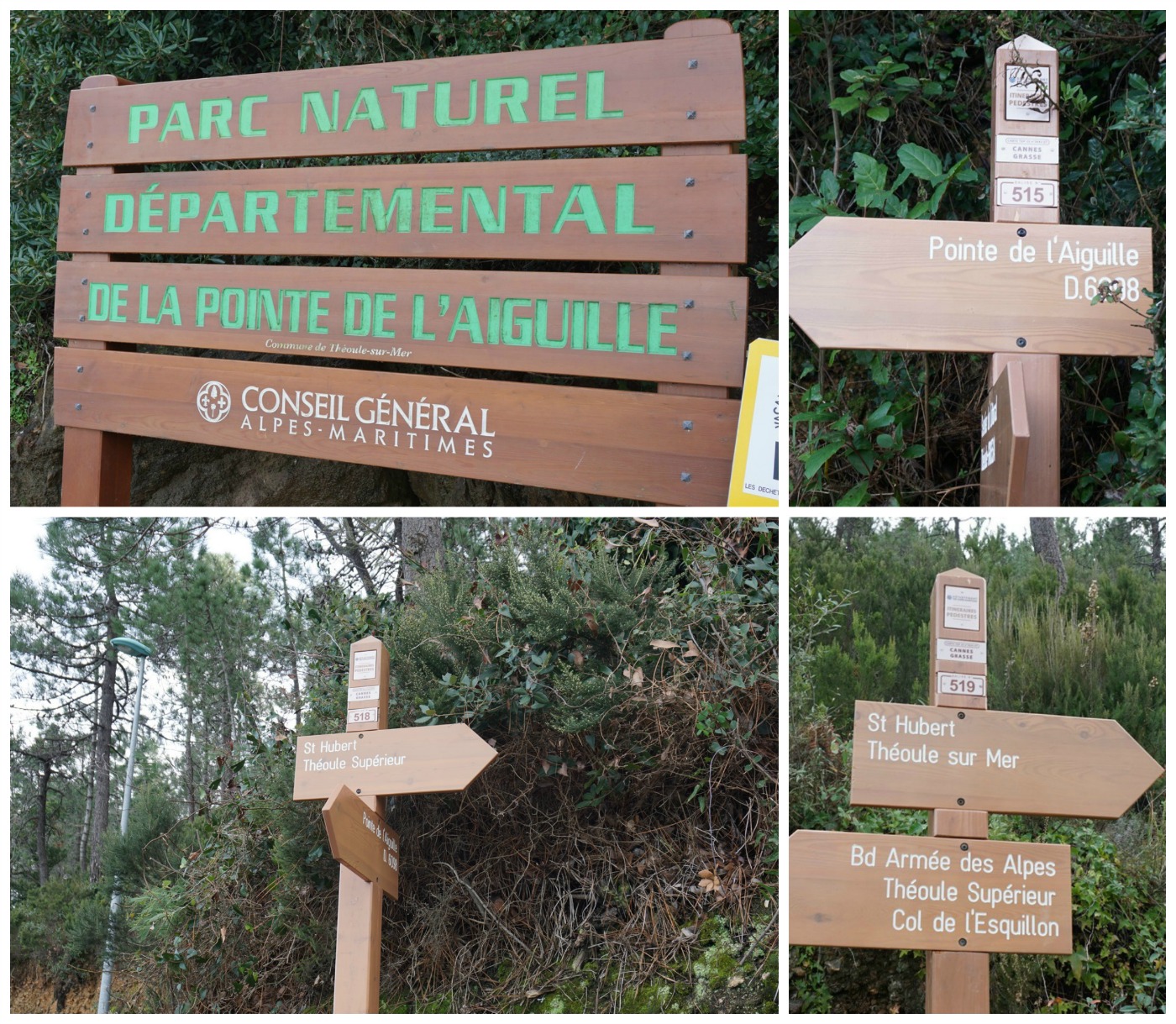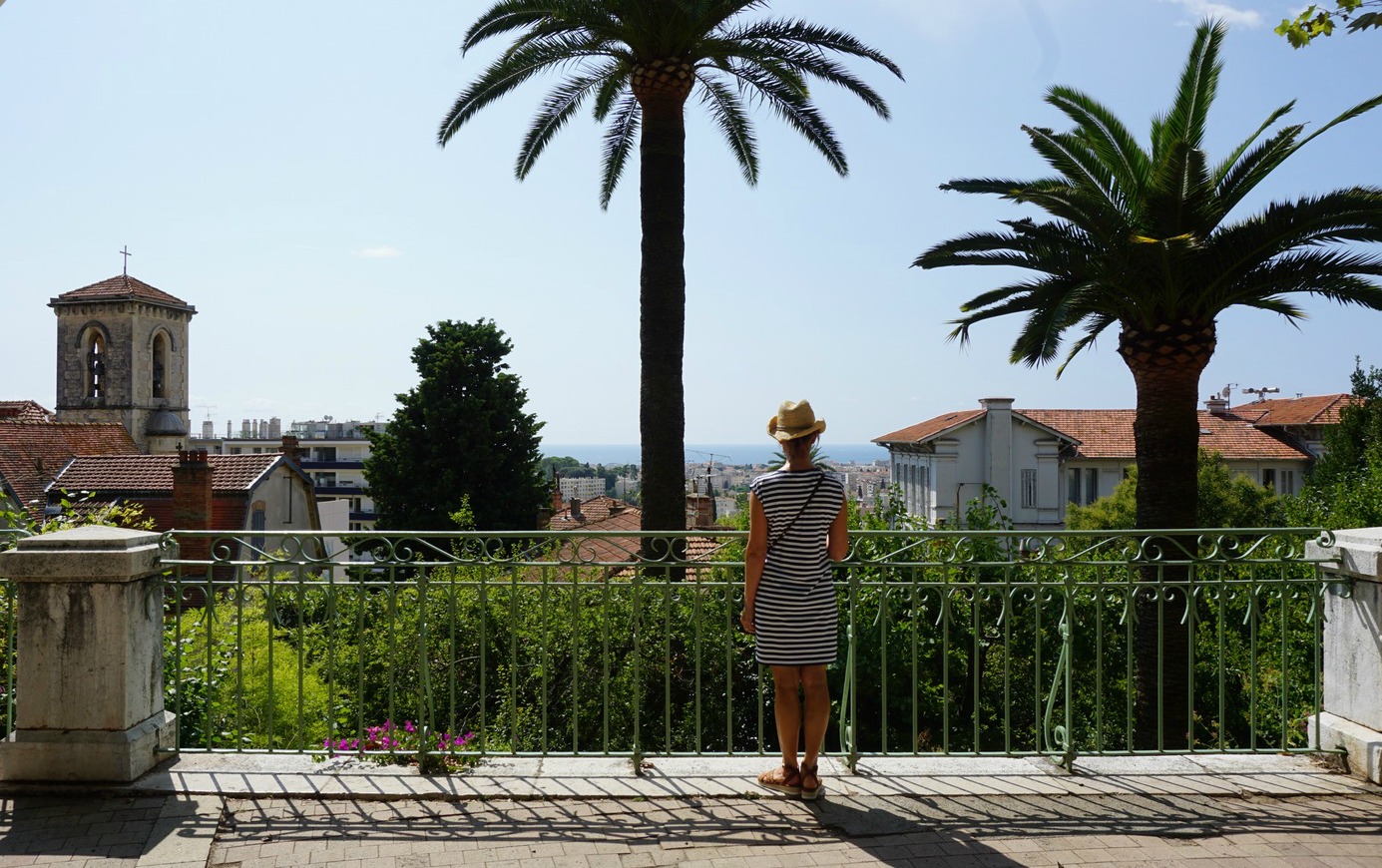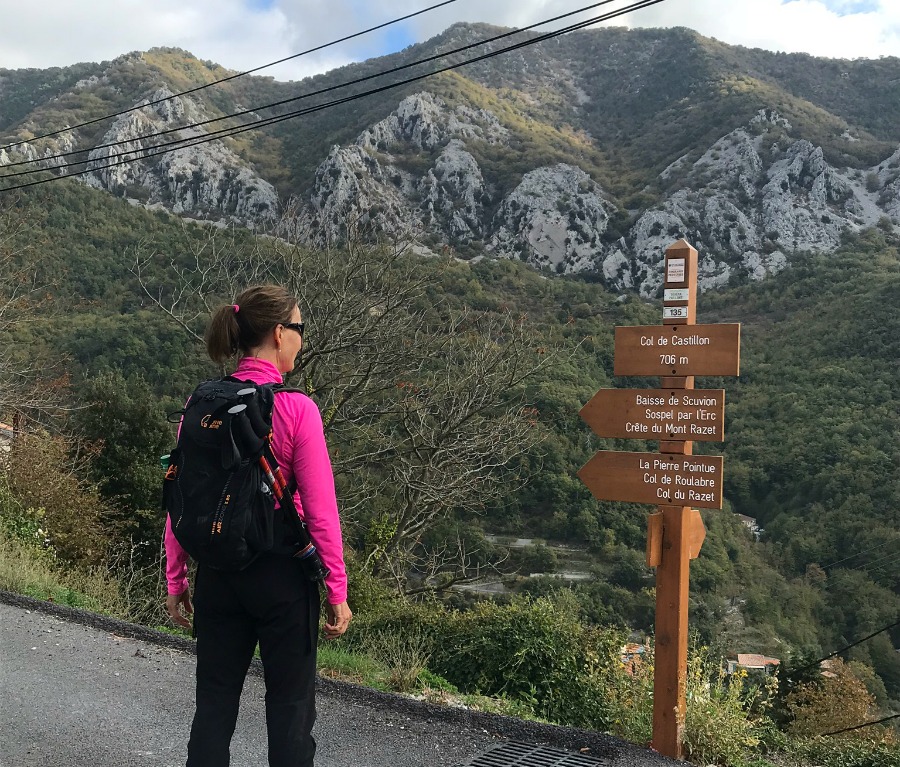
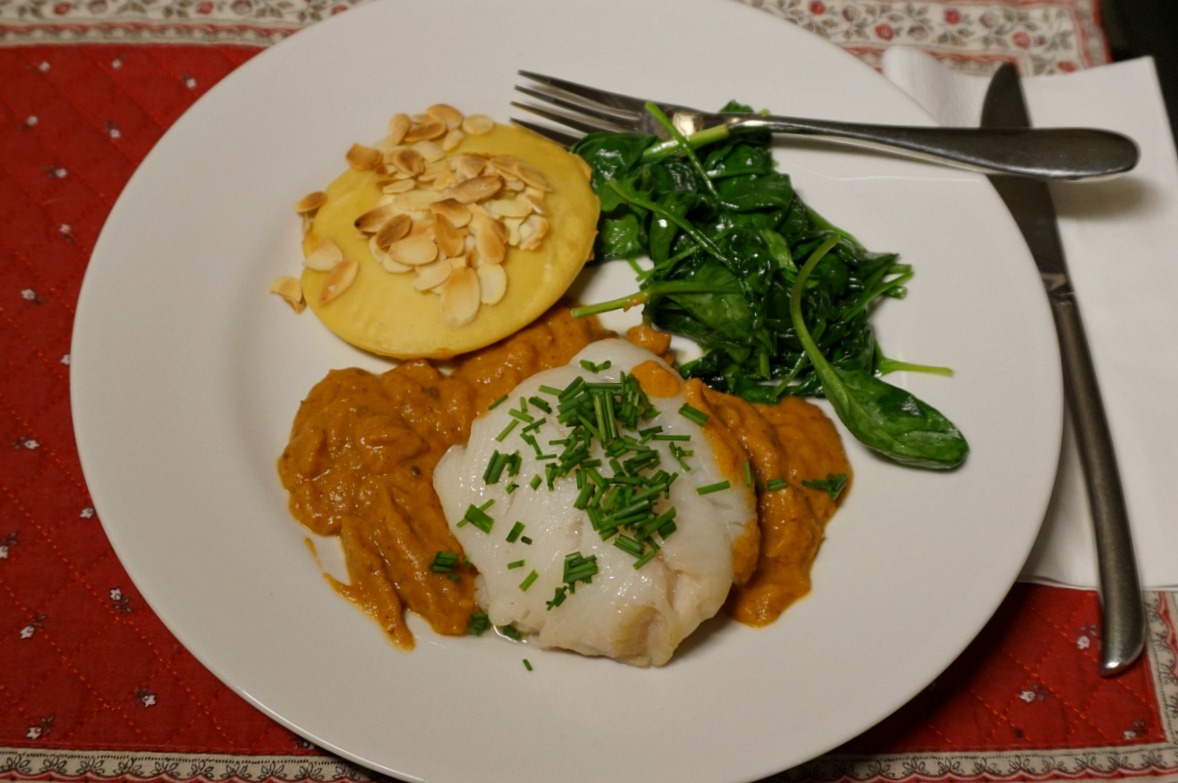
Recently the local newspaper, Nice Matin, wrote about a 24-year old talented chef from Nice, Julia Sedefdjian, who only a year after opening her restaurant Baieta in Paris got a Michelin star. The menu in her restaurant reflects her roots in Nice. One of the dishes is her version of bouillabaisse; steamed fish served with sauce niçoise.
But what is sauce niçoise? Julia’s recipe is of course her secret so I googled sauce niçoise and it seems that there are several versions with different vegetables. I tried and modified different French recipes and settled with the following recipe which I think goes best with white fish fillets and at the same time reflects the choice of typical ingredients here in Nice.
By all means add some seafood to your choice of baked or steamed white fish fillets if you wish your dish reflect more bouillabaisse. You can also use more anchovy fillets if you like. I used them sparingly because I didn’t want them to overpower the delicate taste of fletan, halibut, which was my choice of fish. Serve your fish with some greens and new potatoes, lentils or grains. In the photo, the fish is served with wilted spinach and panisses, local chickpea cakes.
2 servings sauce niçoise
2 small and tasty tomatoes
1 shallot
1 clove garlic
4 anchovy fillets
4 black olives, pitted
2 tbsp. olive oil
Freshly ground black pepper
Dip the tomatoes into boiling water for 1- 2 minutes, then peel and coarsely chop them. In a small casserole, warm olive oil over medium- low heat. Peel and chop the shallot and peel and mince the garlic. Add them to the casserole and sauté for 10 minutes. Add the tomatoes, anchovies, olives, and black pepper. You can first soak the anchovies in water for 10 minutes to reduce the amount of salt in them.
Let all the ingredients simmer for 5 minutes. With a hand-held mixer, purée the sauce. It will be quite thick, you can add 1- 2 tbsp. of boiling water if you wish. Place the fish on the plates and divide the sauce around it.
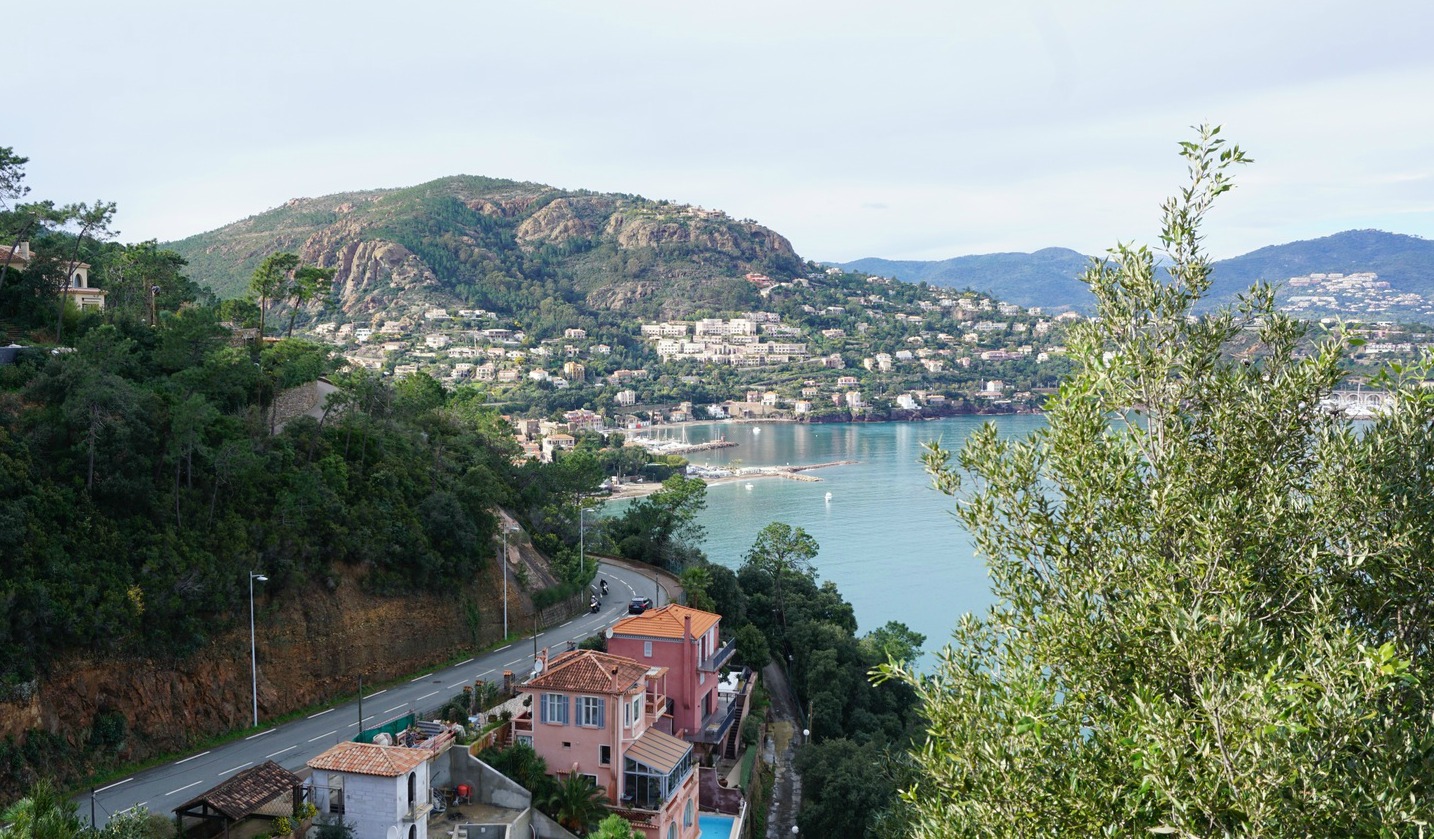
Théoule-sur-Mer (36 km from Nice) is a small coastal town between Mandelieu-La Napoule and Miramar. The landscape here is already more provençale and the Esterel mountains with their typical red colours add a special spice to the surroundings.
This easy walk called Circuit d’Aguille starts from the Esplanade of Charles de Gaulle in the town centre.
We walked along the paved promenade Pradayrol to Plage de l’Aguille where the trail forked uphill. We first ascended to signpost #515 and then descended to Pointe de l’Aguille. After admiring the magnificent pebble beach of Gardanne we took the same path back, continued to the coastal road RD6098, turned right, and followed it about 100 m. We then forked left and continued along rue de l’Allée des Pins then rue A.Ballif.
At signpost #518 (pointing to St Hubert, Théoule Supérieur) we forked right and followed another good trail to the highest point of this walk. Best views were to the north and east (The Napoule Bay and Cannes). The trail continued towards St Hubert above Théoule-sur-Mer, and we soon reached paved streets. We took Chemin de la Calade (steep stairs down), crossed the main RD 6098 road again before reaching our starting point.
We hope our GPS track shown below is useful, as well as the description in the Randoxygène guide (in French; link above)
Duration: about 1h 35
Distance: about 5 km
Elevation gain: about 200 m (includes detour to the Gardanne beach)
Map: 3544 ET Fréjus St-Raphaël Corniche de l’Esterel

Here is another great recipe to make when Mediterranean blood oranges are in season. I have chosen fresh duck legs, cuisses de canard, which have less fat than the traditional confit de canard, duck legs preserved in their own fat and salt.
Braising which means first lightly frying and then slowly stewing under lid makes the duck legs fondant, tender and melting.
2 servings
2 fresh duck legs
1 small onion, chopped
1 clove garlic, minced
1 tbsp. flour
100 ml red wine
100 ml chicken stock
1 organic blood orange, zest and juice
6 baby turnips
1 bouquet garni, a bay leaf and some thyme sprigs tied together
Freshly ground black pepper
Place a heavy casserole such as Le Creuset over medium- low heat and gently fry the duck legs on both sides until golden brown.
Add the onion and garlic and continue sautéing for about 5- 10 minutes.
Add the flour and mix. Then add the wine, stock, and orange zest. Peel the turnips, cut the larger ones in halves and add to the casserole. Add the bouquet garni and some black pepper and simmer covered for 1 hour.
Juice the blood orange. Turn the duck legs over, pour the juice over them and continue simmering partly covered for 40- 50 minutes.

Le Cannet is located about 3 km north of Cannes. It is a chic; surprisingly quiet town and many small streets still have the atmosphere of a small South of France village.
The post-impressionist painter Pierre Bonnard (1867-1947) left Paris and stayed over 20 years in Le Cannet. The Bonnard Museum in a Belle Epoque house is situated on the Boulevard Sadi Carnot next to the town hall.
In early autumn, when we visited the museum, the air was cooler and the crowds had left the Riviera. We found a free parking on Bd Sadi Carnot. There’s a small parking house behind the museum. From Cannes, there is also a bus connection.
The Bonnard Museum is beautifully built, but it is small compared with the huge Paris museums. The museum opened in 2011, and it co-operates with Le Musée d’Orsay in Paris.
This summer’s exhibition, Inspirentes Inspiratrices, was dedicated to the ladies who had inspired Bonnard, Matisse, Vuillard, Picasso and many other renown painters and sculptors. Despite its size, the exhibition had a very high quality.
After the museum, we walked up along a narrow lane to Rue Saint-Sauveur. We had lunch on a large terrace with several restaurants while admiring the view down to Cannes and the Mediterranean Sea.

Poulet au citron, lemon chicken, is a classic French winter dish when lemons are in season. It is usually made with citron confit, preserved lemons. I have found a recipe to quickly make preserved lemons in microwave, and with less salt than in the traditional recipes. Make sure that you use organic lemons because the secret of the taste in preserved lemons is that they are not peeled.
Citron confit express,2 servings
1 organic lemon
50 ml water
A pinch of salt
Wash the lemon and cut into small pieces. Place all the ingredients in a small microwave bowl. Cover and microwave for 2 minutes, then mix. Repeat the process five times, then place the bowl in the fridge for 24 hours before using. In a pinch, citron confit express can be used at once but the consistence is better after 24 hours in the fridge.
2 servings Poulet au citron
4 organic chicken thighs, with skin
1 shallot
1 clove garlic
2 servings citron confit express
1 organic lemon
2 thyme sprigs
Freshly ground black pepper
2 tbsp. olive oil
100 ml water
Fresh thyme leaves to decorate
In a heavy casserole, cocotte, warm the olive oil over medium heat and fry the chicken thighs on both sides until golden brown. Chop the shallot and mince the garlic and add to the casserole. Continue cooking for a few minutes.
Wash the lemon, cut into six segments and add to the casserole. Add the citron confit express, thyme? Water, and black pepper.
Cover and reduce the heat. Simmer for 45 minutes. Decorate with fresh thyme leaves and serve with new potatoes or green lentils.
NB! If you wish to have a deeper colour on the chicken thighs and lemon segments roast the dish without lid in 210° C for the last 20 minutes.

Magret et clémentines, duck breast with clementines, is a perfect winter recipe when Corsican clementines are in season. Almost 80% of the French clementine production comes from Corsica and these days organic clementines are available.
2 servings
1 magret de canard, duck breast
4- 6 organic Corsican clementines
1 organic orange, zest and juice
100 ml water
1 tbsp. runny honey, pref. lavender honey
1 tbsp. red wine vinegar
Freshly ground black pepper
Chopped parsley to decorate
In a small saucepan, warm the honey, water, and orange zest over low heat. Let simmer for about 15 minutes.
Criss- cross the fatty side of the duck breast with a small sharp knife. In a heavy iron-cast frying pan over medium-high heat, fry the magret 8 minutes on the fatty side, then 6 minutes on the meat side. If you prefer your duck breast more well done, cook for 10 minutes on the fatty side. Place the duck breast on a cutting board and cover with aluminium foil.
Pour the fat out of the pan and set the pan over medium heat. Deglaze the pan with the orange juice and add the red wine vinegar. Peel the clementines and add the clementine segments to the pan. Reduce the heat and let the clementines cook for a few minutes. Add the honey- orange zest confit from the saucepan.
Slice the duck breast and divide on the plates. Divide the clementines on the plates and drizzle over the sauce. Decorate with chopped parsley and serve with green lentils or beans.

In spite of its modest elevation, Mouton d’Anou (1079 m), is a dominating summit on a large plain behind the Baous of St-Jeannet and La Gaude.
We have previously tried to hike to Mouton d’Anou from Saint-Jeannet some years ago, but had to turn around at Jas Jausserand because a sheep flock guarded by several large dogs was staying in the middle of the trail, and making a detour was not possible.
This time we decided to start our ascent from the perched village of Le Broc (450 m) along a straight-forward trail. As the hunting season was still in full swing, we chose a non-hunting day.
From Le Broc Village, we started from signpost #1 (37 in old maps!) along a steep narrow street. In fact, this and the next signpost (#3) did not have our summit written, only Bouyon, Bézaudun and others. The trail proper soon forked right from the paved alley. The first part was a steep path, but it levelled off soon. We came to a piste, forest road, walked along it a bit till signpost #5 where our trail forked left with Mouton d’Anou clearly shown.
We continued along the trail that climbed gently in a sparse oak forest. We came to another dirt track and signposts #137 and 138. Our mountain was visible. From #138 we took the first apparent trail to the mountain top. The summit was marked with a cross. The view was superb, 360°, from the snow-capped southern Alps to the Mediterranean Sea. We took a parallel path back to the dirt track below the mountain, this trail was less rocky.
We then descended along the same trail back to Le Broc.
Elevation gain : 637 m
Duration : 4 h
Distance : 12,2 km
Map: 3642 ET Vallée de l’Esteron Vallée du Loup

In this recipe, chicken thighs are slowly cooked in tomato sauce with bell peppers. A heavy casserole, cocotte, is perfect for making this carefree but tasty dish.
2 servings
4 free-range chicken thighs with skin
1 red bell pepper
1 green bell pepper
1 shallot
1 clove garlic
2 tbsp. olive oil
75 ml white wine
75 ml chicken stock
3 tbsp. tomato purée
½ tsp. Piment d’Espelette or other mild chilli powder
2 tbsp. black olives
Fresh basil to decorate
Warm the olive oil over medium heat in a heavy casserole such as Le Creuset. Fry the chicken thighs on both sides until golden.
Wash the bell peppers and cut into strips discarding the seeds. Add to the casserole. Peel the shallot, chop and add to the casserole. Peel and mince the garlic clove and add to the casserole.
Add the white wine, tomato purée, chicken stock, and Piment d’Espelette. Reduce the heat to simmering, partly cover the casserole and simmer for 30 minutes.
Add the black olives and continue simmering without cover for 10 minutes. Meanwhile microwave some new potatoes. Divide the potatoes and stew on the plates and decorate with basil.

We have previously hiked up to Mont Razet (1285 m) from Col de Castillon (730 m) between Menton and Sospel. This time we decided to explore the trail that circles Mont Razet. The GPS track shows the itinerary. Our planned turning point was the picturesque Col du Razet (1032 m) with views down to Menton and the coast.
Many of the coastal mountains in this region close to the Italian border reach well over 1000 m, notably Grammondo (1379 m). During the hunting season no hunting days, Tuesday or Friday, should be preferred.
We noted that many of the signposts had been renewed. Most of the trail was easy with some short steep and rocky parts. A well-known hiking area for locals, it remains a bit off the beaten track for visitors.
From Col de Castillon we started ascending straight north towards Baisse de Scuvion (1168 m), first passing a crossroads at signpost #137. At Baisse de Scuvion, we were just under Mont Razet. We continued, now descending a bit, heading east to Col de Roulabre (1094 m; signpost #91) then to Col du Razet (signpost #17), where we turned back, followed the same trail to Col de Roulabre (15 min), then further to Pierre Pointue (1176 m; signpost #93 and the crossroads to Mont Razet summit), with remnants of military bunkers by the trail.
After Pierre Pointue the trail descended sharply. Some parts of the trail ran in the forest, some in a rocky incline. Eventually we reached signpost #137 again, and walked back to our starting point.
All in all, it was a great variant of our previous hike where we followed the local randoxygène guide “Circuit du Razet”. In fact, this time we really circled the mountain!
Distance: 9,6 km
Duration: 3h 40
Elevation gain: 616 m
Map: IGN Nice-Menton Côte d’Azur 3742 OT

This vegetable recipe is again loosely based on the French morning TV show Télématin. The presenter first told that the Sun King Louis XIV loved peas so much that he used to eat them as a snack like some other people eat chocolate.
She then presented the following simple but tasty recipe in which peas are cooked together with spring onions, olive oil, and salad leaves. She called this the French way of preparing peas. This green side goes well with simple chicken breast, turkey escalope or, as in our dish, rôti de veau, roasted veal.
2 servings
100 ml frozen peas
2 spring onions, white parts only
2 tbsp. olive oil
A small head of salad leaves, such as a head of little gem
Wash and slice the white parts of the spring onions. In a casserole, sauté the spring onions and peas in olive oil. Wash the salad, chop it and add to the casserole. Cover and let cook for a few minutes.
Stir the vegetables and lift on the plates.











